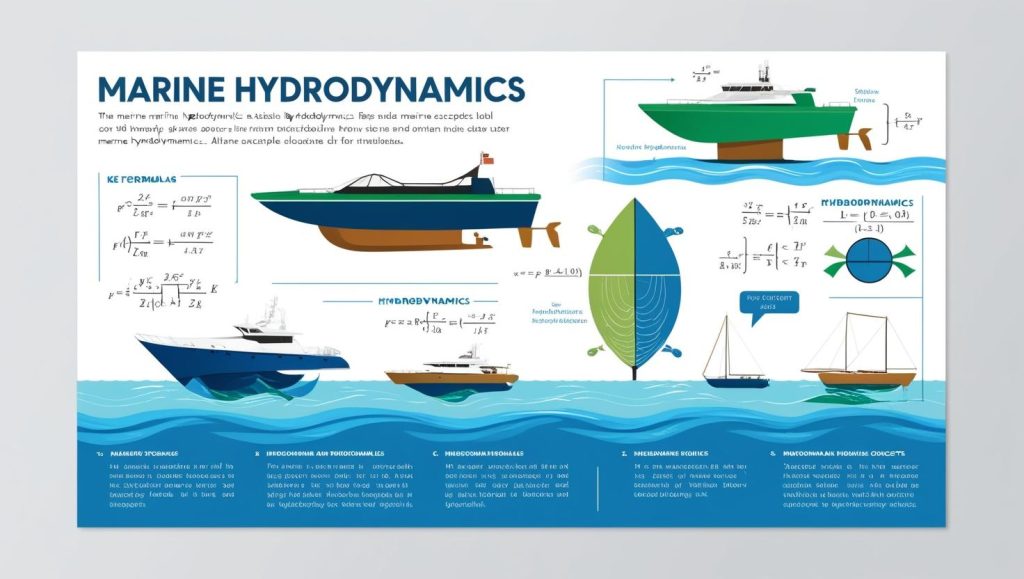Introduction
Marine hydrodynamics is a crucial field in naval architecture and ocean engineering, focusing on the behavior of water and how it interacts with marine vessels and offshore structures. Understanding marine hydrodynamics principles is essential for designing efficient ships, submarines, and offshore platforms. This blog provides detailed Marine Hydrodynamics homework help, ensuring students gain insights into core concepts, computational tools, and real-world applications.

Understanding Marine Hydrodynamics
What Is Marine Hydrodynamics?
Marine hydrodynamics studies how water flows around marine structures and vessels. It involves:
- Fluid Flow Analysis – Understanding the movement of water around ship hulls and offshore structures.
- Wave Dynamics – Studying how waves impact marine structures and vessel stability.
- Resistance and Propulsion – Examining how water resistance affects ship speed and efficiency.
- Hydrostatic Stability – Ensuring vessels remain balanced in different water conditions.
Key Elements of Marine Hydrodynamics
- Ship Resistance and Powering – Calculating the energy needed to move a vessel efficiently.
- Wave-Structure Interaction – Studying how waves affect marine platforms and floating structures.
- Hydrodynamic Forces – Understanding forces acting on underwater vehicles and offshore wind farms.
- Computational Fluid Dynamics (CFD) – Using simulations to model water behavior around ship hulls.
Common Challenges in Marine Hydrodynamics Homework
1. Complex Mathematical Calculations
Students must apply differential equations and numerical methods to analyze fluid motion.
2. Understanding Fluid-Structure Interaction
Assignments often require knowledge of how water flows around moving structures, affecting drag and stability.
3. Proficiency in Computational Tools
Marine hydrodynamics relies on software such as ANSYS Fluent, OpenFOAM, and Star-CCM+ for simulations.
4. Wave and Tidal Energy Applications
Designing offshore energy systems requires knowledge of wave behavior and hydrodynamic efficiency.
Tips for Completing Marine Hydrodynamics Assignments
1. Use Credible Sources
Refer to guidelines from IMO, American Society of Naval Engineers (ASNE), and Society of Naval Architects and Marine Engineers (SNAME).
2. Master Core Fluid Mechanics Concepts
Key principles include:
- Bernoulli’s Equation – Understanding pressure and velocity relationships in moving fluids.
- Navier-Stokes Equations – Governing equations for fluid flow analysis.
- Froude Number and Reynolds Number – Key parameters in hydrodynamic scaling and flow classification.
3. Utilize Marine Hydrodynamics Software
Programs like Maxsurf, CFD solvers, and WAMIT help in analyzing water resistance and wave interactions.
4. Seek Professional Assistance
Students struggling with coursework can benefit from Marine Hydrodynamics homework help through tutoring services and academic writing support.
Recommended Online Resources for Homework Help
- International Maritime Organization (IMO) – Hydrodynamics Regulations – www.imo.org
- American Society of Naval Engineers (ASNE) – Engineering Resources – www.navalengineers.org
- Society of Naval Architects and Marine Engineers (SNAME) – Research Papers – www.sname.org
- MIT OpenCourseWare – Fluid Mechanics and Hydrodynamics – ocw.mit.edu
The Importance of Professional Assistance
Many students benefit from expert tutoring services that provide guidance on hydrodynamic simulations, wave interactions, and resistance calculations. Platforms like Chegg, Course Hero, and TutorMe offer specialized support for marine hydrodynamics assignments.
Conclusion
Excelling in marine hydrodynamics requires a strong understanding of fluid mechanics, numerical modeling, and industry standards. Students facing difficulties with their coursework can improve their knowledge by utilizing Marine Hydrodynamics homework help, accessing expert guidance, and using credible resources.


